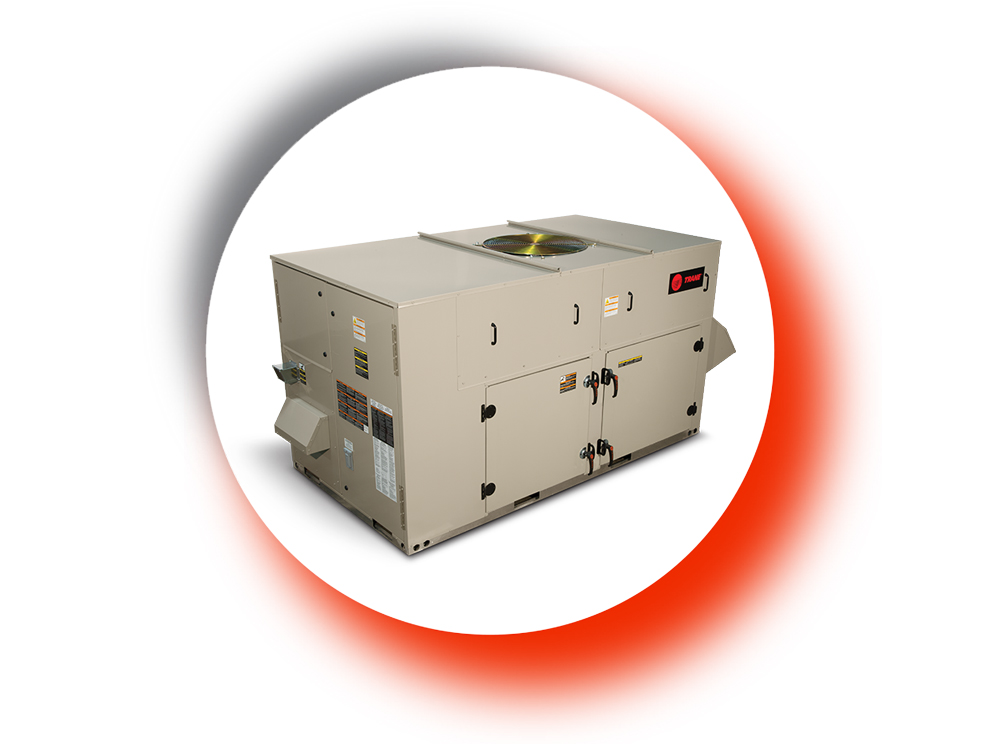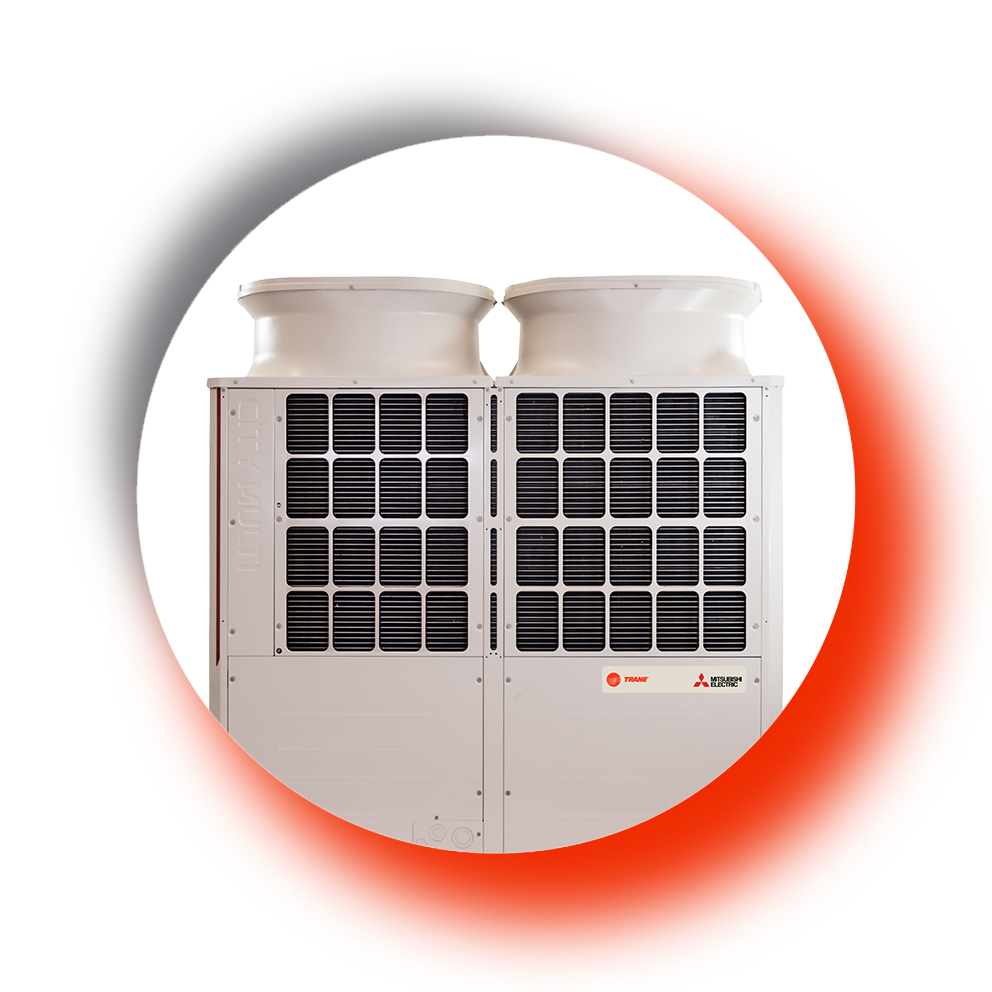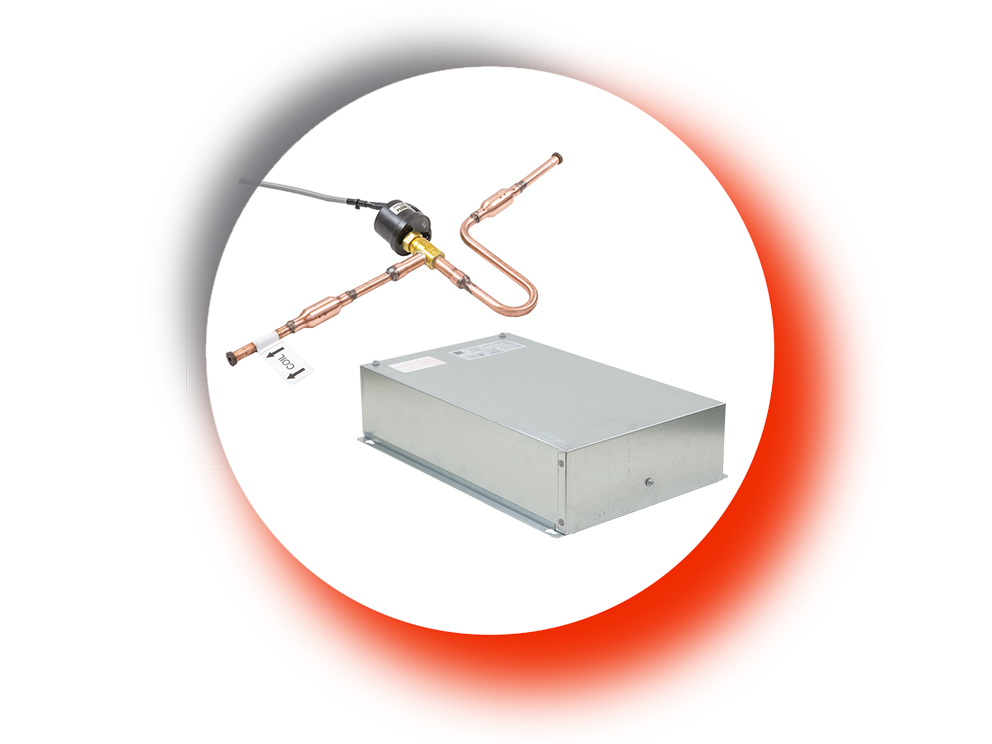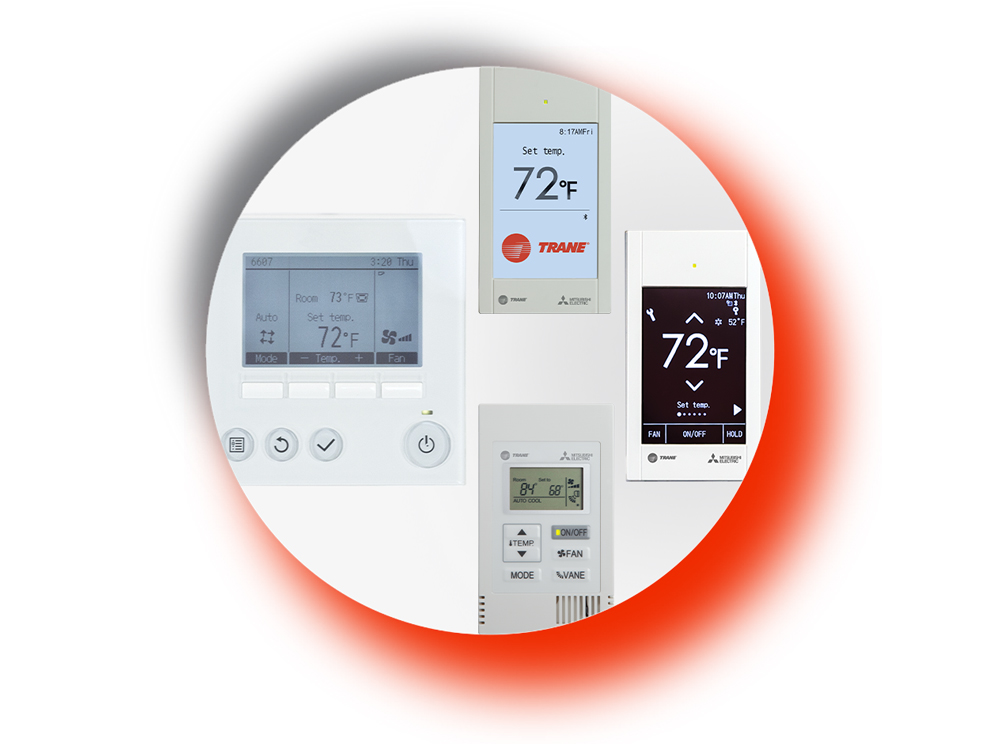Variable Refrigerant Flow (VRF) Systems
Overview
Trane has paired applications knowledge and expertise with its extensive equipment and controls offerings to provide variable refrigerant flow (VRF) systems solutions. This fully integrated, high-performing HVAC system solution is designed to deliver customized comfort throughout any commercial space. Regardless of the capacity, energy efficiency, functionality or performance-monitoring requirements, our VRF Systems Solutions, featuring Trane® / Mitsubishi Electric VRF Technology, are designed to exceed the comfort and sustainability goals established for commercial building projects.
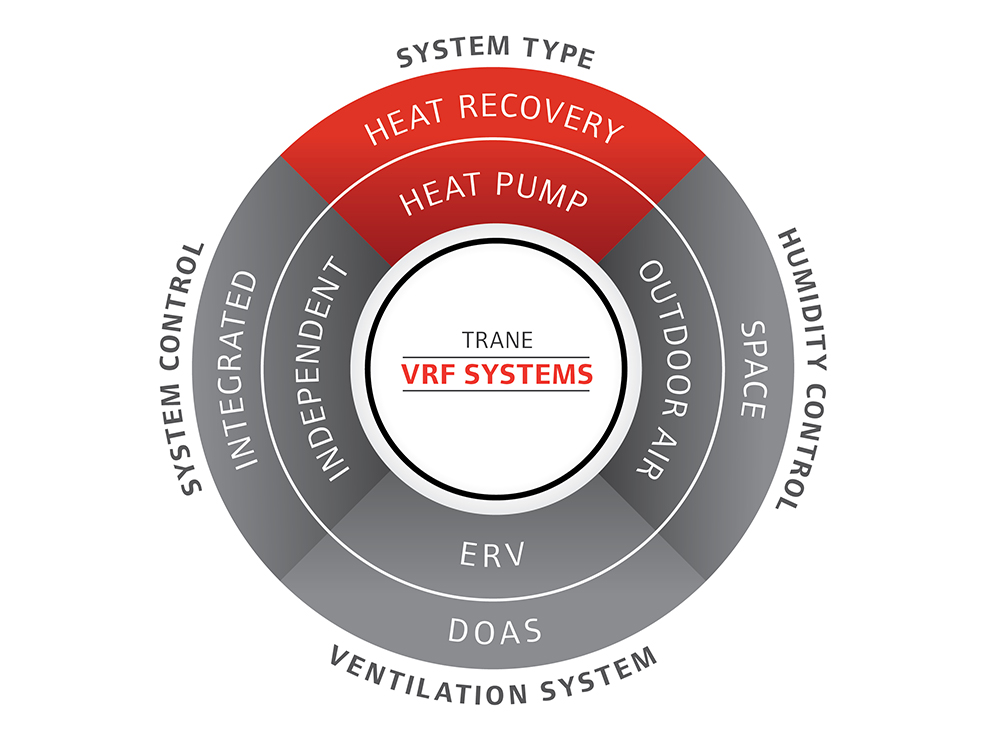
System Type: Heat Pump or Heat Recovery?
One of the largest benefits of a VRF system is that the indoor units utilize coils which can heat or cool the zones. Heat pump system configurations can either completely cool or completely heat all the zones it serves. In a Heat Recovery system each individual zone can either heat or cool as needed. When simultaneously cooling and heating in a heat recovery system, energy can be transferred from one space to condition another.
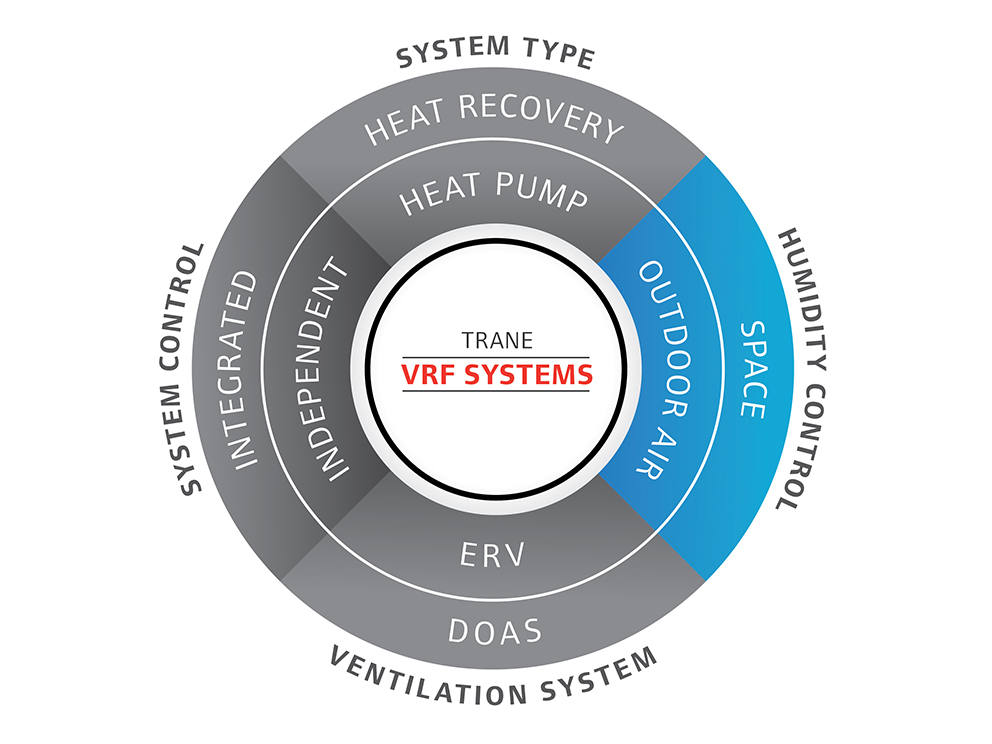
Humidity Control: To what level will you manage humidity in your building?
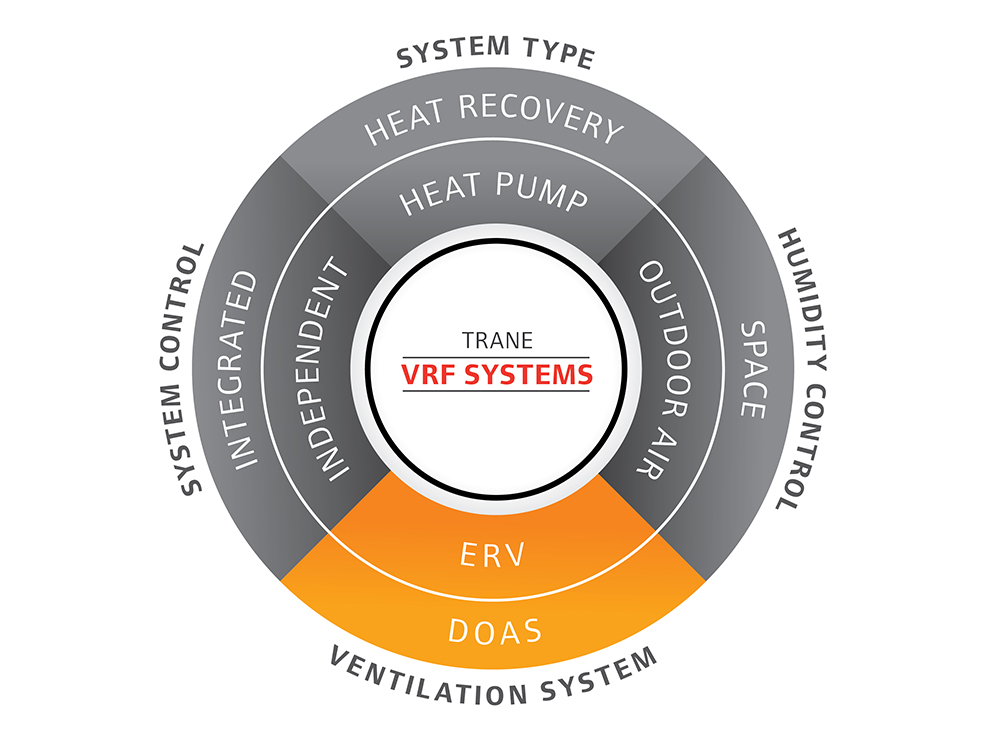
Ventilation System: How will ventilation air be conditioned—energy recovery ventilator or dedicated outdoor air system?
At a minimum, a filter and fan setup is required to supply ventilation air to a building. Many building energy codes also require exhaust-air energy recovery. As a result, a basic ventilation system might consist of an energy recovery ventilator (ERV). For additional air treatment—including humidity control—a dedicated outdoor air system (DOAS) would likely be required.
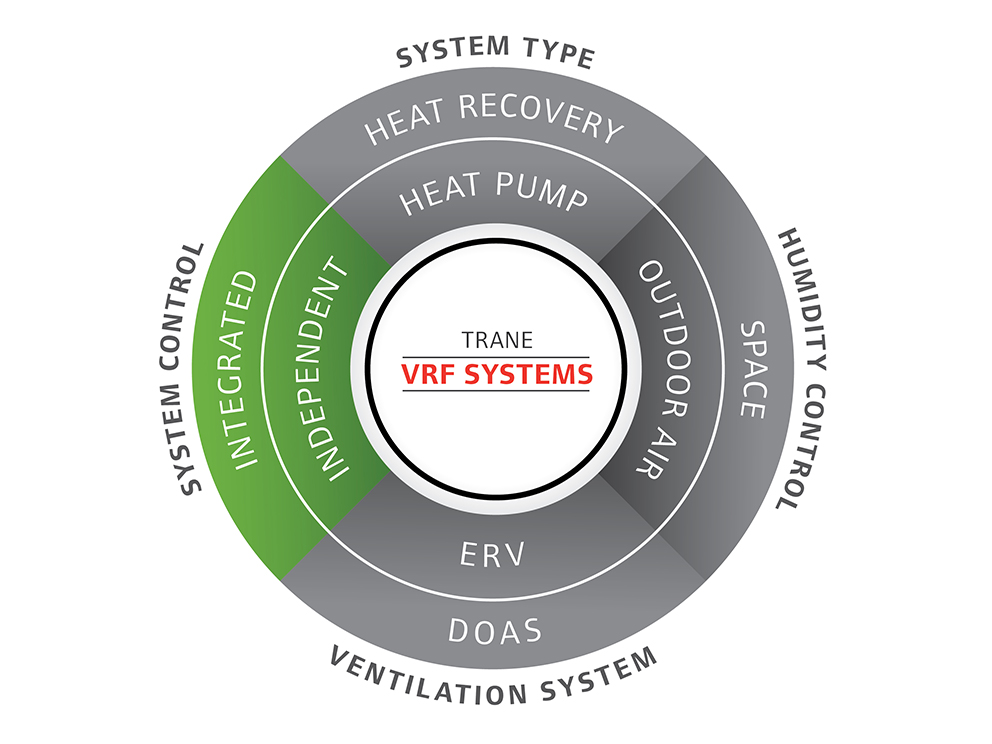
System Control: How will the system be controlled?
Finally, controls are necessary to enable and operate the VRF and ventilation systems. In some applications, it might be acceptable to control both systems independently. In other cases, close coordination may require an integrated control system.
Resources
For technical documentation and IOMS for Trane® / Mitsubishi Electric VRF and Ductless products, please visit Trane.MyLinkDrive.com.



